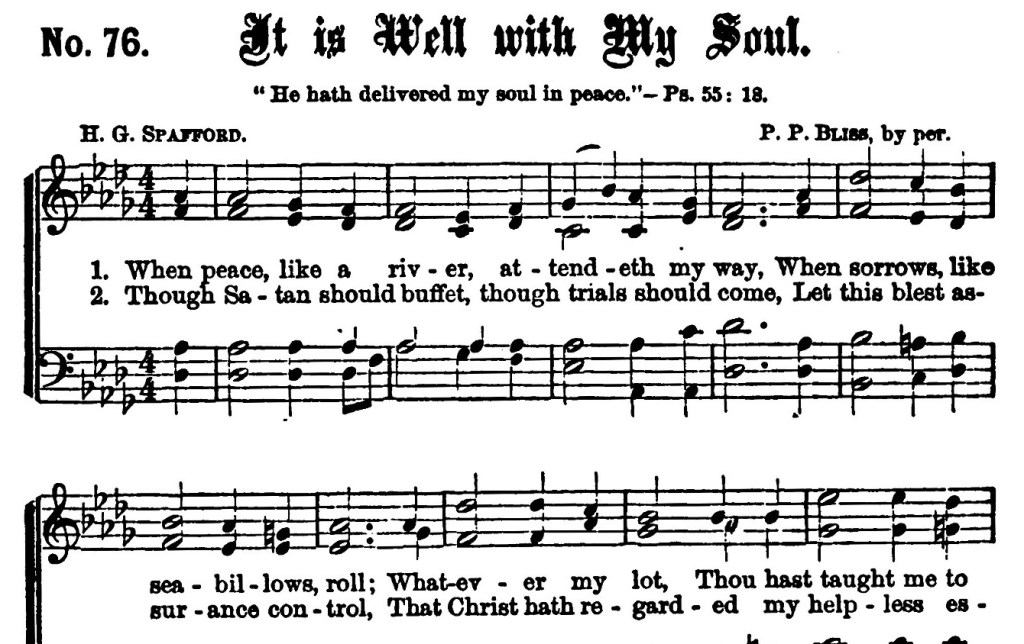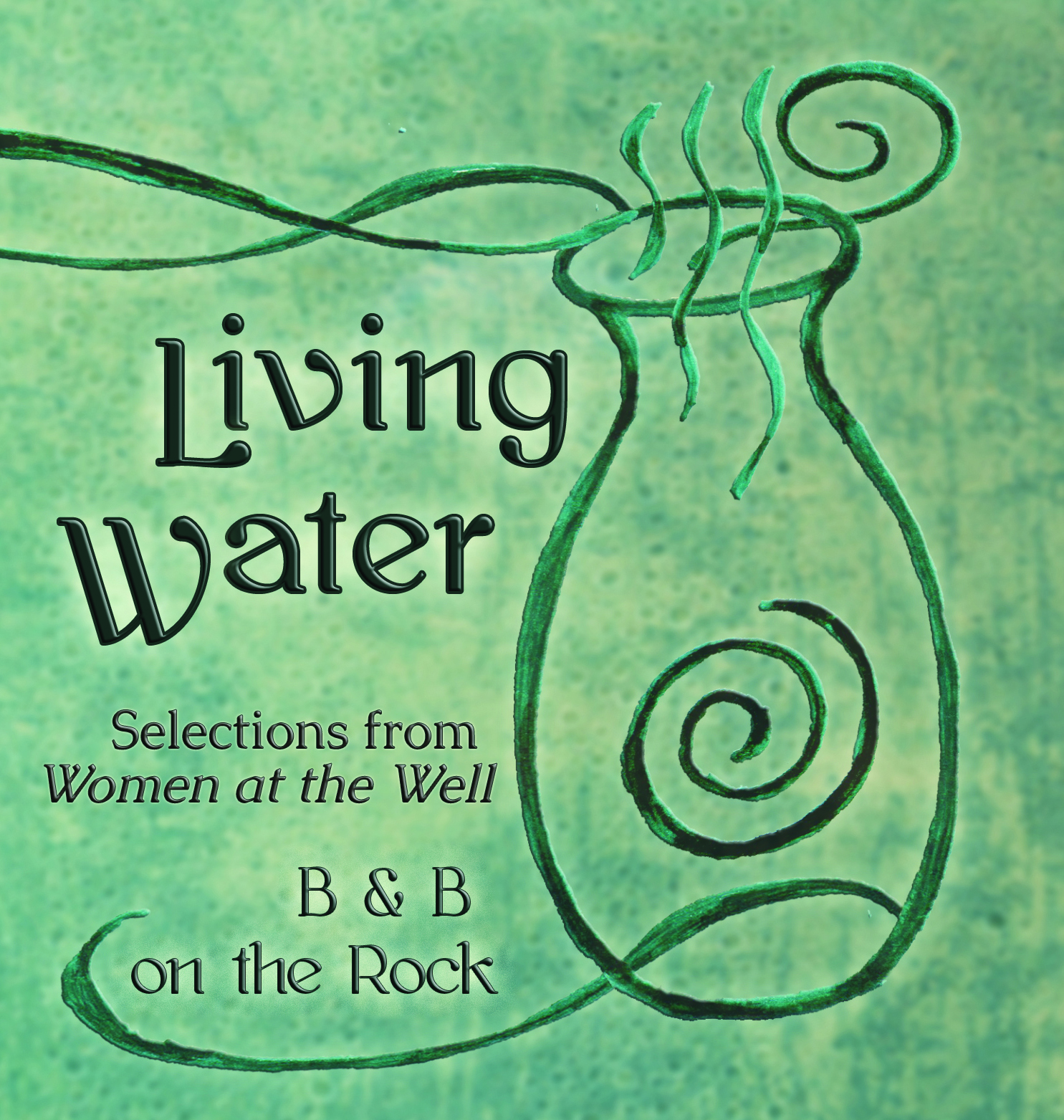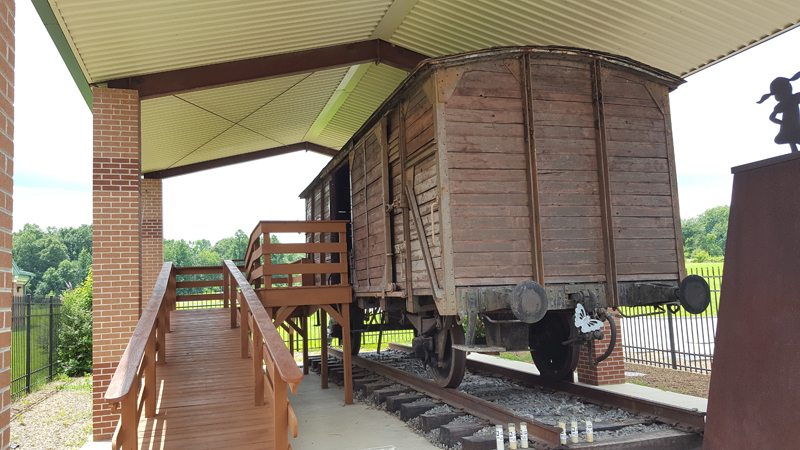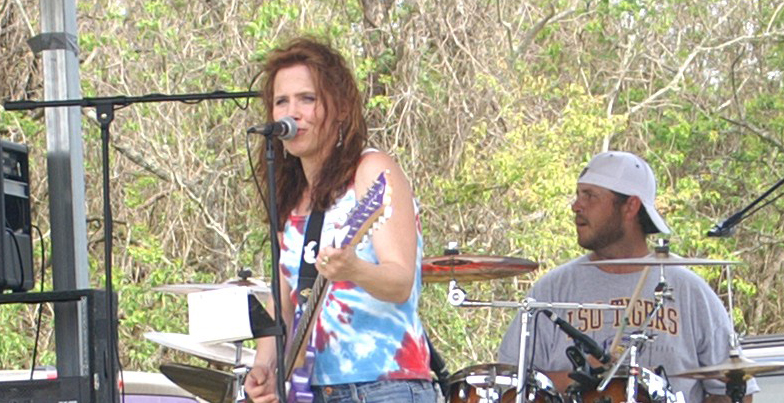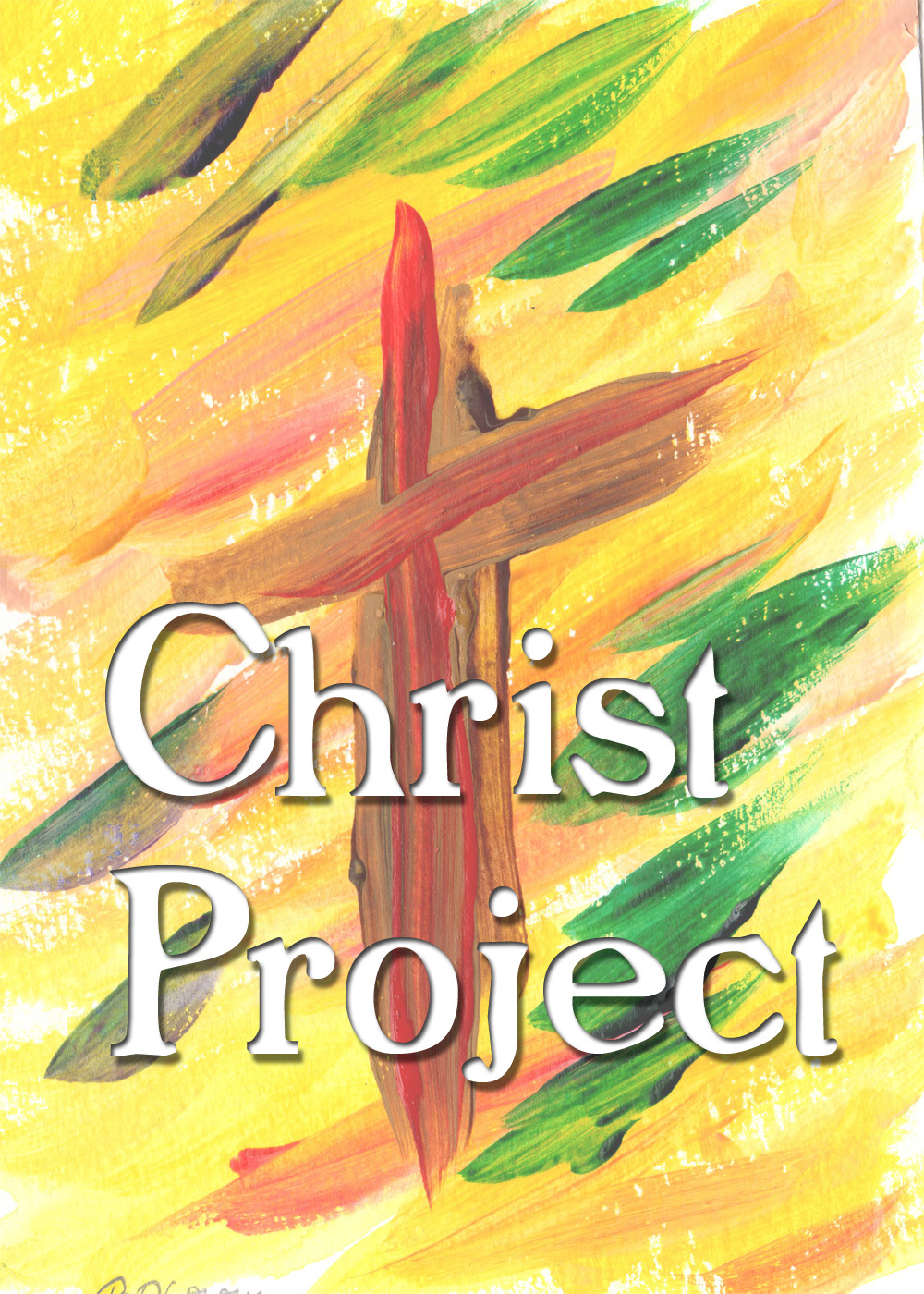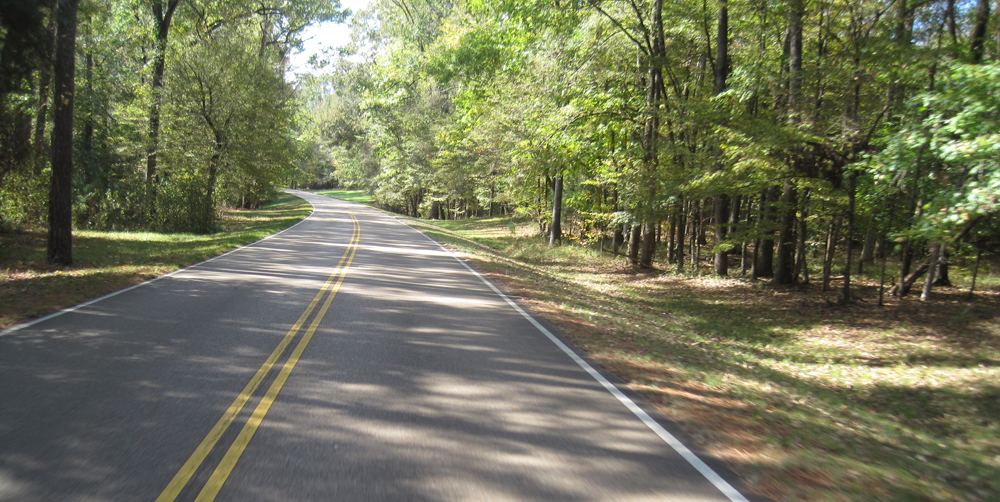While I am a regular congregant and chorister at the Episcopal Church of the Epiphany in the deep south of Louisiana,
I have sung for my “other church family” at Temple Gates of Prayer. The setting of the season of High Holy Days is a perfect time to share with you a miracle – that to me, just goes to show (again) how much God can do with the smallest, simplest things.
Over two months have passed since Joshua and I visited the Children’s Holocost Memorial in Whitwell, Tennessee. I can still barely find the words to write about it.
This amazing memorial is at a middle school in the mountains of Tennessee, northwest of Chattanooga. Friends Diane and Vickie suggested we visit there after we’d spent time with the sisters of the Community of St. Mary in Sewanee. I’m glad I had that dose of peacefulness to strengthen me before visiting the memorial, which still has me in awe.
Over the years, the 8th grade classes at Whitwell Middle School have learned about history, prejudice, and the holocaust through this amazing project that has changed hundreds of thousands of hearts and lives.

Sign at the entrance of the Memorial.
“You should go see this,” said our friends. “It may not be open right now, because it’s at a school, but you could at least try” and they tried to describe the Paperclip Project. In the end, Diane sent us off with a DVD that we watched later that evening.
Neither Bubba (Joshua) nor I said a word as we watched this nearly 2 hour long documentary. (We are never at a loss for words.) As the credits rolled, we said in unison, “we’re going.”
I will quote the Whitwell website to give you an idea of the Memorial:
“In 1998 eighth grade students at Whitwell Middle School began an after-school study of the Holocaust. The goal of this study was to teach students the importance of respecting different cultures as well as understanding the effects of intolerance. As the study progressed, the sheer number of Jews who were exterminated by the Nazis overwhelmed the students. Six million was a number that the students could not remotely grasp. The students asked Sandra Roberts and David Smith if they could collect something to help them understand the enormity of this extermination. The teachers told the students to ask permission of principal, Linda M. Hooper. She gave the students permission to begin a collection, IF, they could find something to collect that would have meaning to the project. After some research on the Internet, the students decided to collect paper clips because they discovered that 1) Joseph Valler, a Norwegian Jew is credited as having invented the paper clip and 2) that Norwegians wore them on their lapels as a silent protest against Nazi occupation in WWII.”
The rest, as they say, is history. The students began collecting paperclips, with the goal of 6 million paper clips. After a slow start, the idea exploded, with help in part from a German journalist husband and wife team who were working in the United States.
Over the following years, the students collected over 30 million paperclips from all over the world. In 2004, a documentary film was made (the DVD that Diane loaned us).
The project expanded exponentially, and became much more than just a class exercise. The project came to change the entire town, and impact everyone who has seen it.
The day that Bubba and I went was a quiet summer day, and Whitwell is off the beaten path and away from the tourist attractions of Chattanooga and Nashville. The town and school are not diverse in population, which is initially one reason why the school chose to learn about the holocaust. In addition to learning about history, there were lessons in tolerance to be learned as well.
We found the school, nestled on the outskirts of town. The gates to the schoolgrounds were wide open, and they were beautiful gates with artistic butterflies incorporated into their design. As we rounded the bend in the driveway, I began to wonder aloud where the memorial (which, we’d been told, was in an authentic cattle car – yes, one of those) might be near the school, behind the school, or…
No need to wonder:

Still, no words.
We drove up in silence. The car sat on a length of track, which rested on limestone. A wheelchair friendly ramp led to the open door of the car. Butterfly bushes were planted nearby, and mosaic butterfly stones and sculptures were around the car, as was an iron fence.
On a granite monument, we read the words of the poem, The Last Butterfly:
The last, the very last,
So richly, brightly, dazzlingly yellow.
Perhaps if the sun’s tears would sing
against a white stone…
Such, such a yellow
Is carried lightly ‘way up high.
It went away I’m sure because it wished to
kiss the world goodbye.
For seven weeks I’ve lived in here,
Penned up inside this ghetto
But I have found my people here.
The dandelions call to me
And the white chestnut candles in the court.
Only I never saw another butterfly.
That butterfly was the last one.
Butterflies don’t live in here,
In the ghetto.
This was written by Pavel Friedmann, dated 4.6.1942 . Pavel was born in 1921 in Prague, and was deported a couple of weeks after the poem was written. He was murdered in Auschwitz in September of 1944.
After spending a long walking in silence around the outside of the fence, Bubba finally spoke.
“Want to go inside?” he said. “But it’s locked,” I replied. “We can get the key. Look.” He pointed out the sign on the gate that I’d missed; the key was available at a local grocery.
We drove into town, sharing few words. The grocery was on the main thoroughfare, and I pulled in next to a motorcycle. “I’ll get it,” I said, grabbing my wallet. After all, they would want some ID, right?
“Hi, is this where I get the key to – “ the young lady smiled, said “yes m’am, here you go” and handed me a key (on a giant paperclip keychain). I stopped in midsentence.
“Do you need an ID, or do I need to check it out, sign anything?”
“Nah, just remember to bring it back when you’re done.”
Wow. Thank you. I got back in the car, unused to this simple, honest, open greeting.
We drove back to the Memorial. I walked over to an area near the parking lot, with stones lining a drainage ditch, and selected a small, smooth one. I walked along the sidewalk, and also selected a piece of limestone. We unlocked the gate, and stepped in.
I don’t know how long we stayed . There was no sense of time. I walked around, finally getting the nerve to touch the cattlecar. It had been cleaned, repaired, and “disinfected.” The car had been used for the most nefarious of work, bringing innocent souls to the slaughter of the camps. Blood, tears, secretions of body and of spirit were soaked into the wood. After the war, it had been adapted to use for hauling grain.
From hauling innocents to death, to hauling food – grain. Was it on the path to being forgotten? Or was this a metaphor as well?
I expected the wood to scream at me, saturated with grief and terror. Yet, it didn’t scream as I’d anticipated. It whispered, and I couldn’t quite make out the whispers. It wept. I walked around the outside of the car, the open doors eye level with me. I left one piece of limestone on the outside of the car, and saw where many other visitors had left their stones of remembrance.
I saw life in the butterfly garden. One memorial stone was placed in honor of the Jehovah’s Witnesses who were murdered by the Nazis. Coincidentally, about the same time as I visited this memorial, my mother was back home, having coffee and visiting with a relative from New York – the daughter of a cousin who was a Jehovah’s Witness.
I finally walked up the ramp and into the car. The doors were both open, and the sides were partitioned off by plexiglass.
Behind the plexiglass were 11 million paperclips.
Clearly, the paperclips were from all over. Not all were “standard American paperclips.” There were plastic ones, differently-curved ones, from all over the world. Tucked in with the paperclips were other memorials:
~A vintage, battered suitcase from a school in Germany filled with letters from German students, written to Anne Frank.
~Kippahs from Bar and Bat Mitzvahs, adorned with paperclips.
~Books, and a copy of the Mourner’s Kaddish.
~A beautiful Mezzuzah, sent from a Jewish Congregation (in Ohio, I think) was on the door of the car. God’s word welcomed all who entered, regardless of faith.
Above the paperclips, a sign read:

Sign above the paperclips, and the suitcase from schoolchildren in Germany. My own reflection, witnessing.
Standing in this car, I wondered how many thousands of souls were forced to ride it, in misery and terror. Today, this cattlecar stands as testimony and reminder: Never again. It serves as a focal point for former, current, and future students who are all involved in the Paperclip Project. Students greet visitors, give tours, answer questions. The heart of this project has grown to encompass the entire community of Whitwell, and people all over the world; art blossoms at this Memorial, reflecting the desire to be a part of this reminder, this hope, this healing.

I left another stone at the edge of the paperclips, and prayed. As much of the Mourner’s Kaddish as I could remember, Hail Holy Queen, and the words of my heart. (After all, what else is an Episcopalian with Catholic roots who says “my other church is a synagogue” going to do?) It’s all God, after all, and prayer is prayer. I prayed, and I listened, actually somewhat confused at what I was feeling and at what I was not feeling. One thing was certain: I will not forget.
I was anticipating angst, fear, horror.
I felt horror…but also some calm, peace, hope, and healing.
The lives lost can never be regained. Yet the healing power of this project which grew into an international effort cannot be denied. I was left awestruck by the power of a simple paperclip and a desire to make a difference, no matter how small.
As I write, I recall reading something about a man who bartered his way to a house, starting with only a paperclip. The students of Whitwell Middle School started with an idea, and a simple paperclip. Even the smallest thing, teamed with love and vision, can make a huge difference.
We were leaving, and had locked up the gate when another car drove up. Somehow, we found our voices to greet the newcomers. “Get ready,” Bubba said to them. “It’ll hit you.”
“I know,” replied the young woman. She told us that she was a teacher, who came to visit the Memorial every summer.
We unlocked the gate for them, and brought the key back to the grocery. “We unlocked it for someone who got there when we were leaving,” I told the young lady at the register. “They said they’d lock it when they left, unless someone else came by.”
“That’s fine,” she said.
“Thank y’all for keeping that key available,” I said as I left. “Being able to walk inside was – incredible.” She smiled. I had no words; it was hard enough to find those.

Artwork at the Children’s Holocaust Memorial
I’ve thought of two words to describe the Children’s Holocaust Memorial: Healing Miracle.
Beyond that, you’ll have to visit it yourself, and I urge you to do so.
The Last Butterfly accessed from:
For information, visit
and
